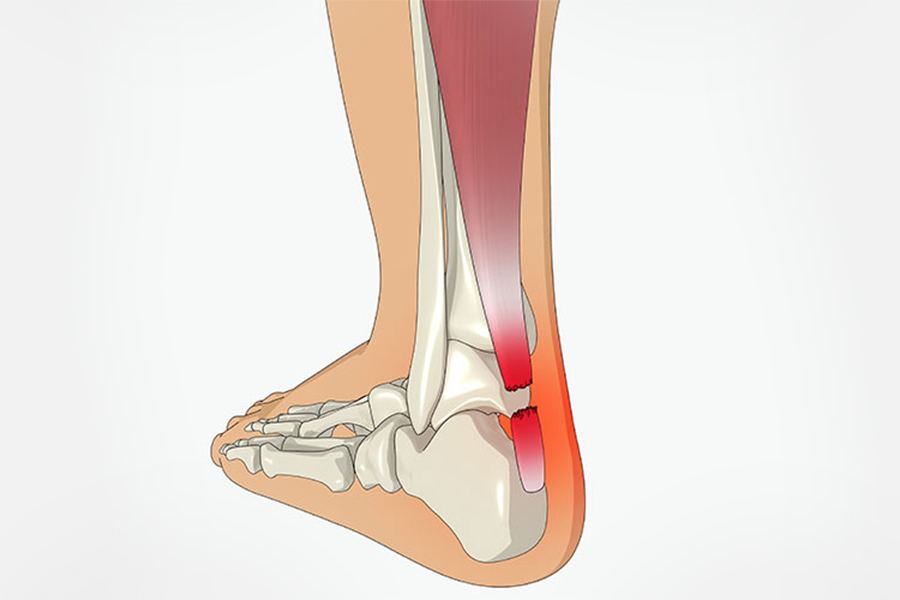Achilles Tendon Injury
An Achilles tendon injury is a condition that affects the Achilles tendon, which is a thick band of tissue that connects the calf muscles to the heel bone (calcaneus). The Achilles tendon is crucial for various activities, including walking, running, jumping, and even standing on tiptoe. Injuries to the Achilles tendon can range from mild to severe, and they are quite common among athletes and physically active individuals.
There are mainly three types of Achilles tendon injuries:
- Achilles Tendinitis:This is the most common type of Achilles tendon injury. It occurs when the tendon becomes inflamed due to overuse or repetitive strain. Factors like sudden increases in physical activity, improper footwear, or inadequate warm-up can contribute to tendinitis. Symptoms may include pain and stiffness in the back of the heel, especially during physical activity.
- Achilles Calcific Tendinopathy: It is also known as calcific tendinosis or calcific tendinitis. Calcific tendinopathy occurs when calcium deposits, often in the form of small crystals, build up within the Achilles tendon. These deposits can cause pain, inflammation, and reduced mobility in the affected area. The exact cause of these deposits is not fully understood, but they may result from repetitive stress or microtrauma to the tendon. Chronic calcific tendinopathy of the Achilles can potentially predispose the tendon to the rim of rupture.
- Achilles Tendon Rupture: A more severe injury, this occurs when the Achilles tendon tears partially or completely. Ruptures can happen suddenly, often during activities that require explosive movements, like sprinting or jumping. Individuals may describe feeling a sudden, sharp pain in the back of the ankle or calf, followed by difficulty walking or standing on tiptoe. A complete rupture sometimes may require surgical intervention.
Risk Factors
Common risk factors for Achilles tendon injuries include:
- Age: Tendon injuries are more common in individuals over 30, as tendons naturally become less flexible and more prone to injury with age.
- Overuse: Repeated stress on the Achilles tendon without proper rest and recovery can lead to tendinitis.
- Lack of flexibility: Tight calf muscles and poor ankle flexibility can increase the risk of injury.
- Inadequate footwear: Ill-fitting shoes or shoes without proper support can contribute to Achilles tendon problems.
- Sudden increases in activity: Rapidly increasing the intensity or duration of physical activity can strain the tendon.
Treatment
Depends on the severity of the injury:
- Rest: Resting the affected leg and avoiding activities that exacerbate the injury is often the first step in treatment.
- Ice: Applying ice to the area can help reduce pain and inflammation.
- Physical therapy: Exercises to stretch and strengthen the calf muscles and Achilles tendon may be prescribed.
- Orthotics: Custom or over-the-counter shoe inserts can provide better support and reduce strain on the tendon.
- Medications: Non-steroidal anti-inflammatory drugs (NSAIDs) may be recommended to alleviate pain and inflammation.
- Immobilization: In the case of a severe rupture, a cast or walking boot may be used to immobilize the ankle.
- Surgery: Surgical repair may be necessary for a complete Achilles tendon rupture.
It's important to seek our opinion, if you suspect an Achilles tendon injury, as prompt treatment can prevent further complications and promote proper healing. Additionally, working us to develop a rehabilitation plan can help you reduce the risk of future injuries and improve overall tendon health.
